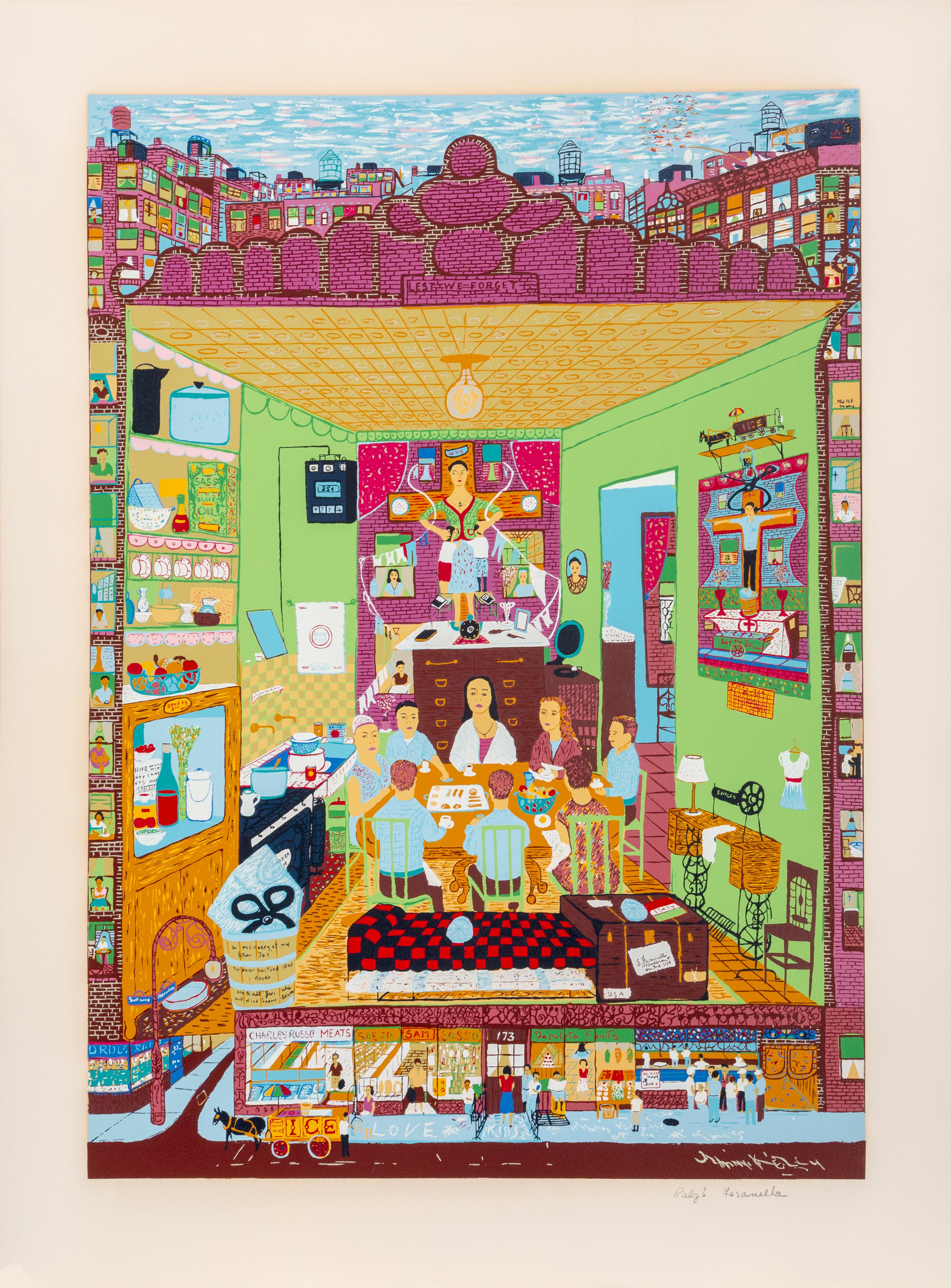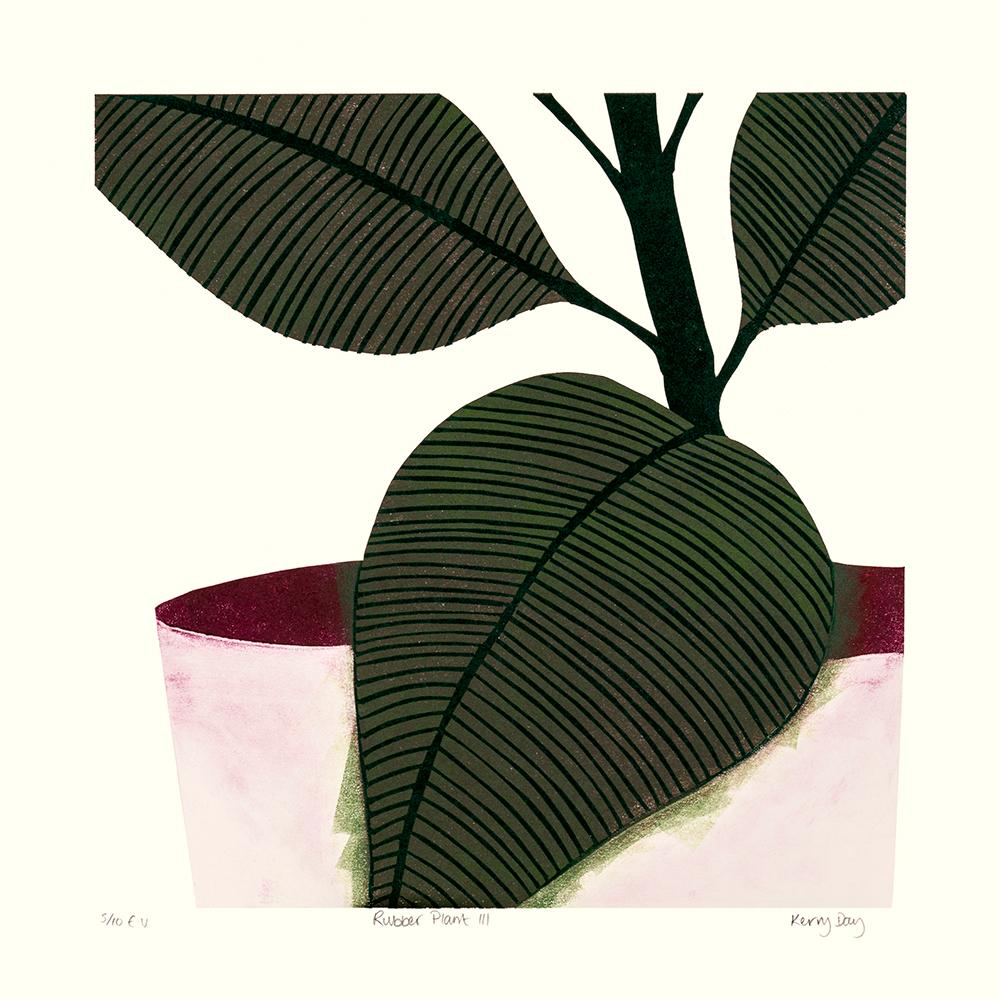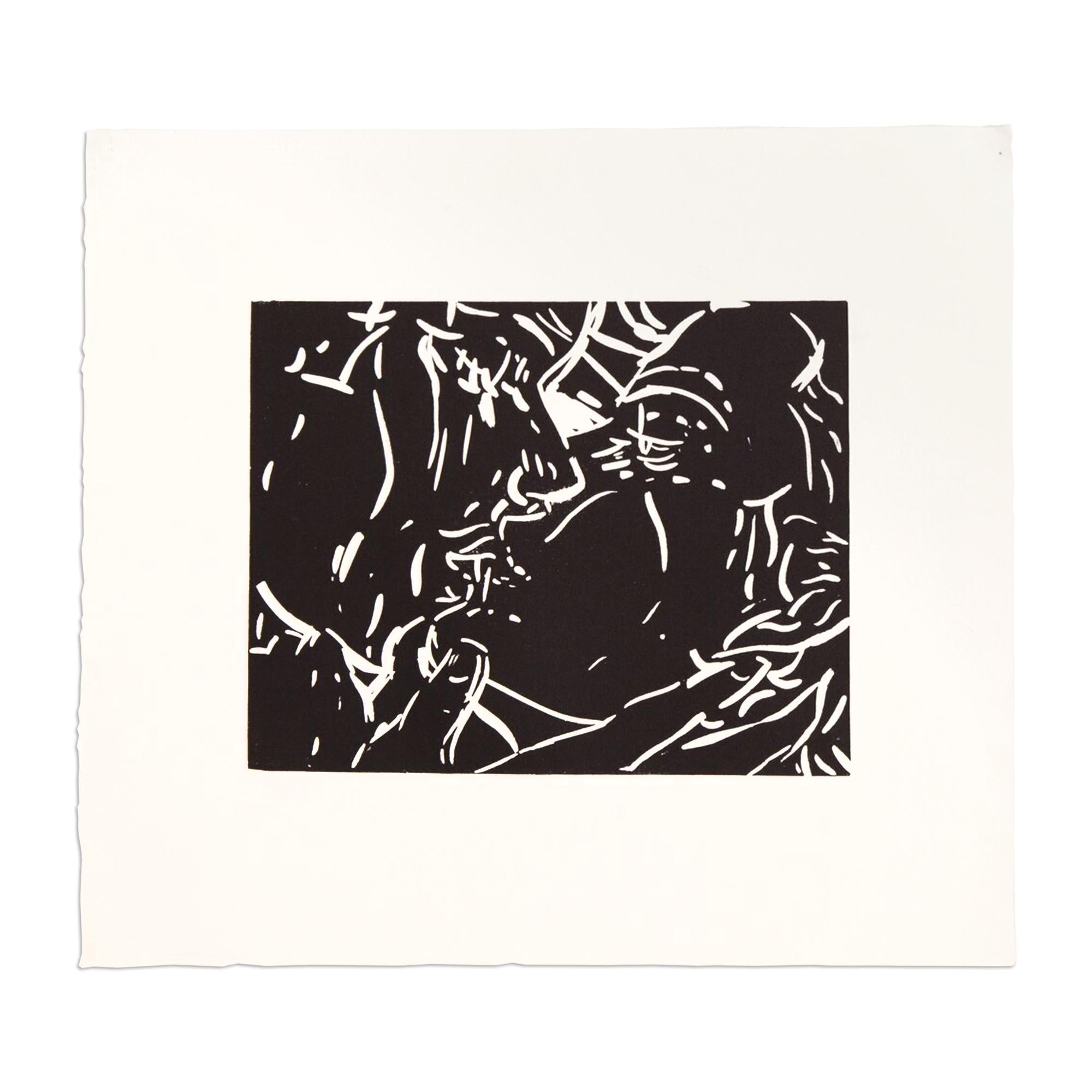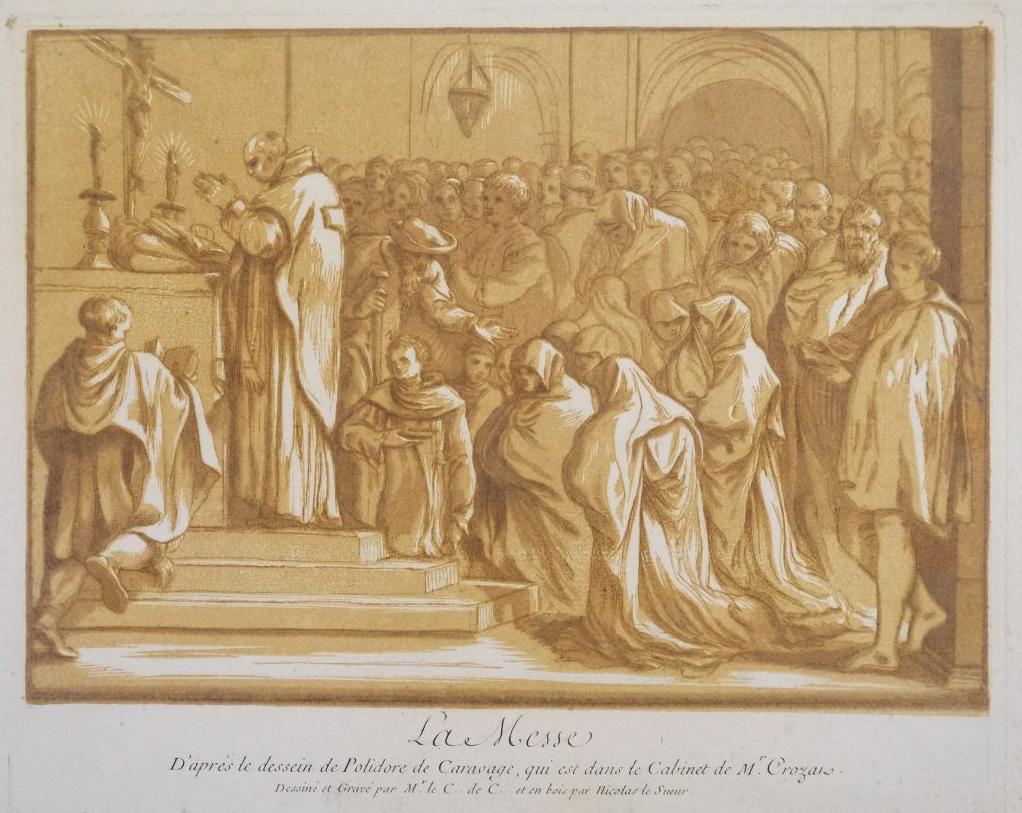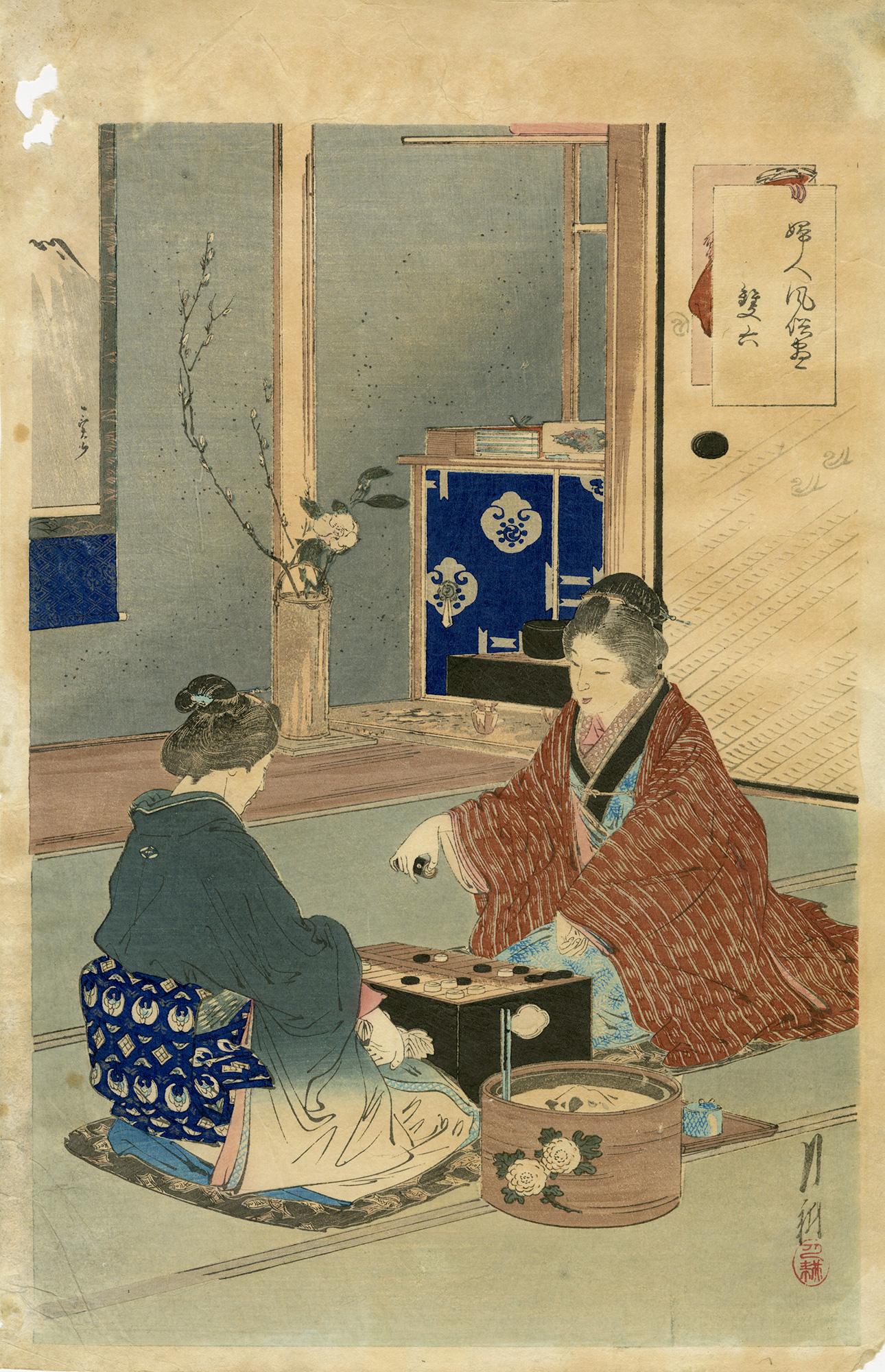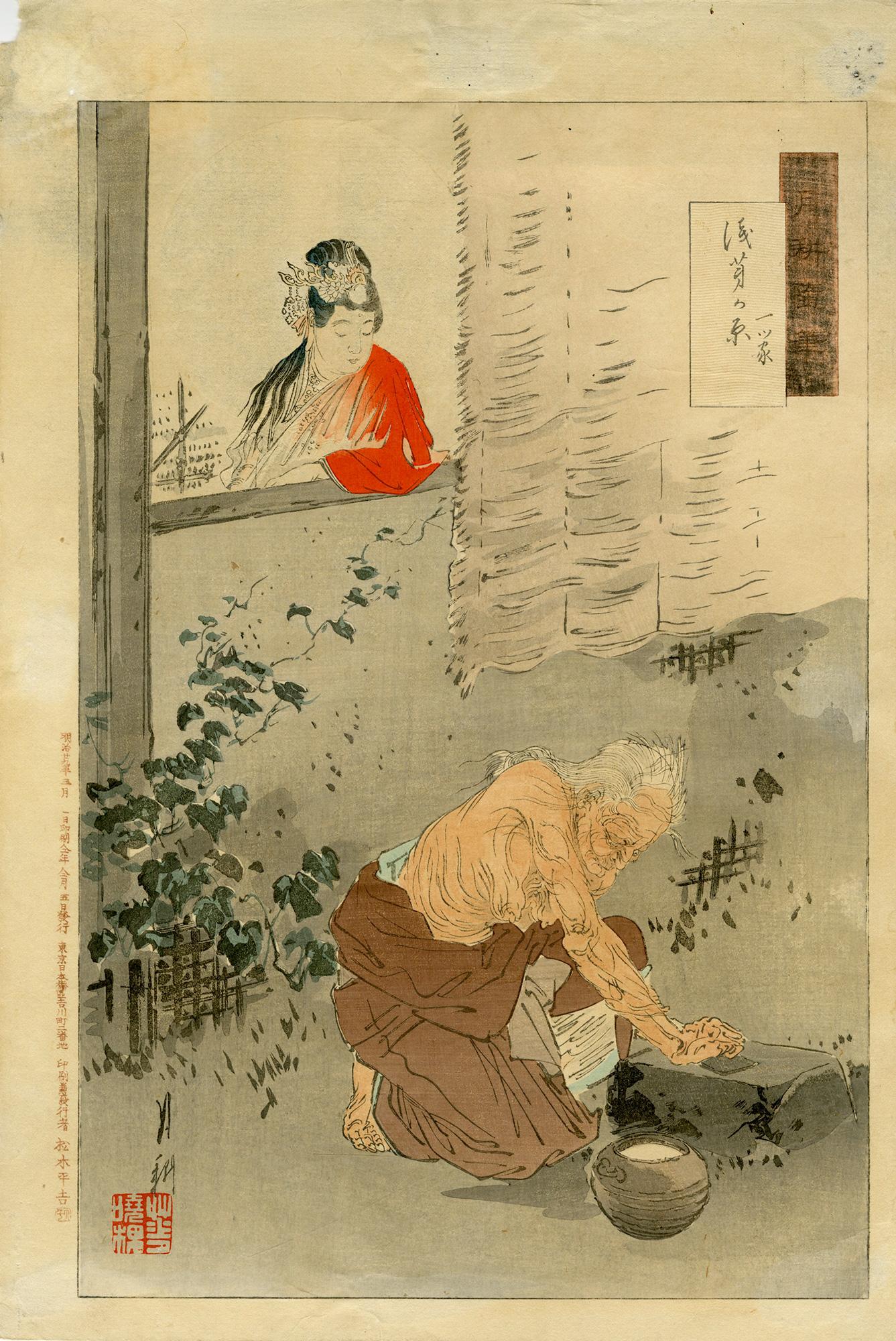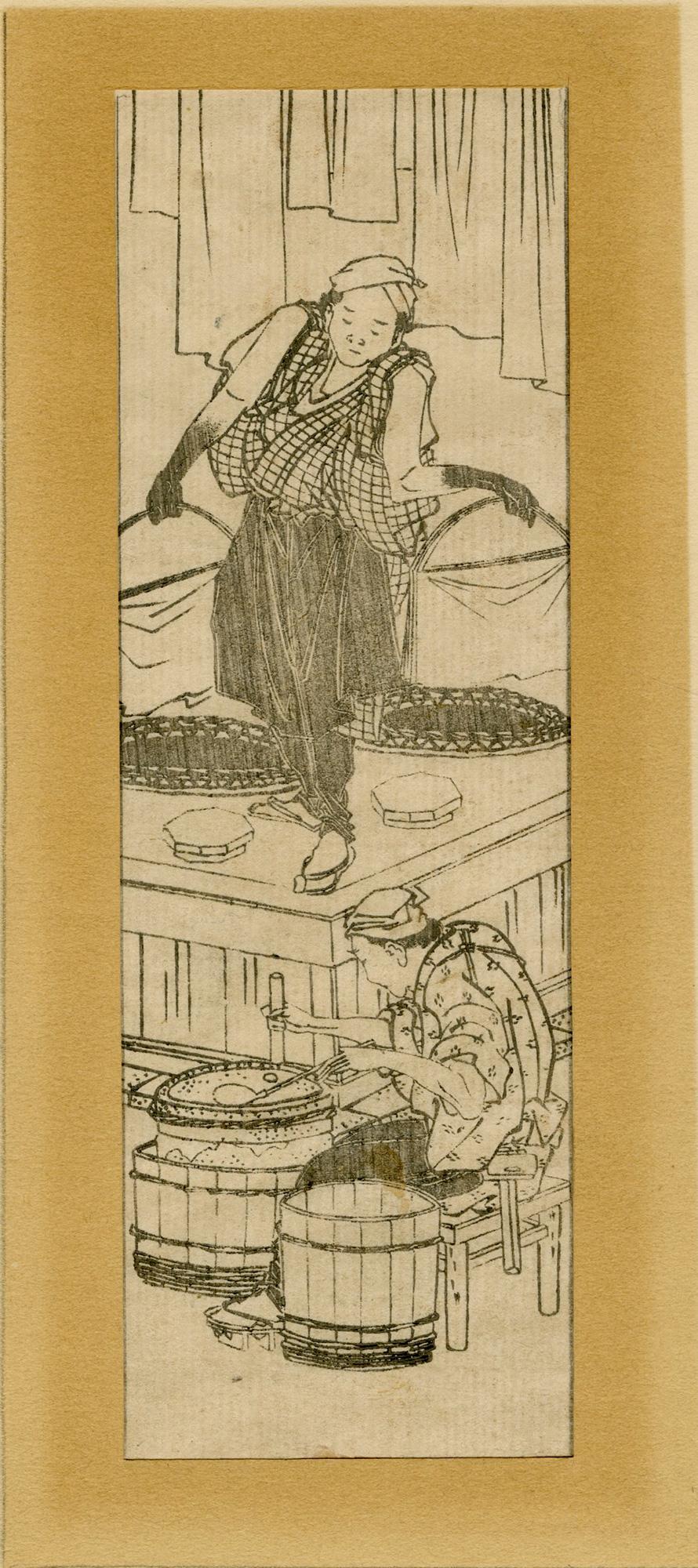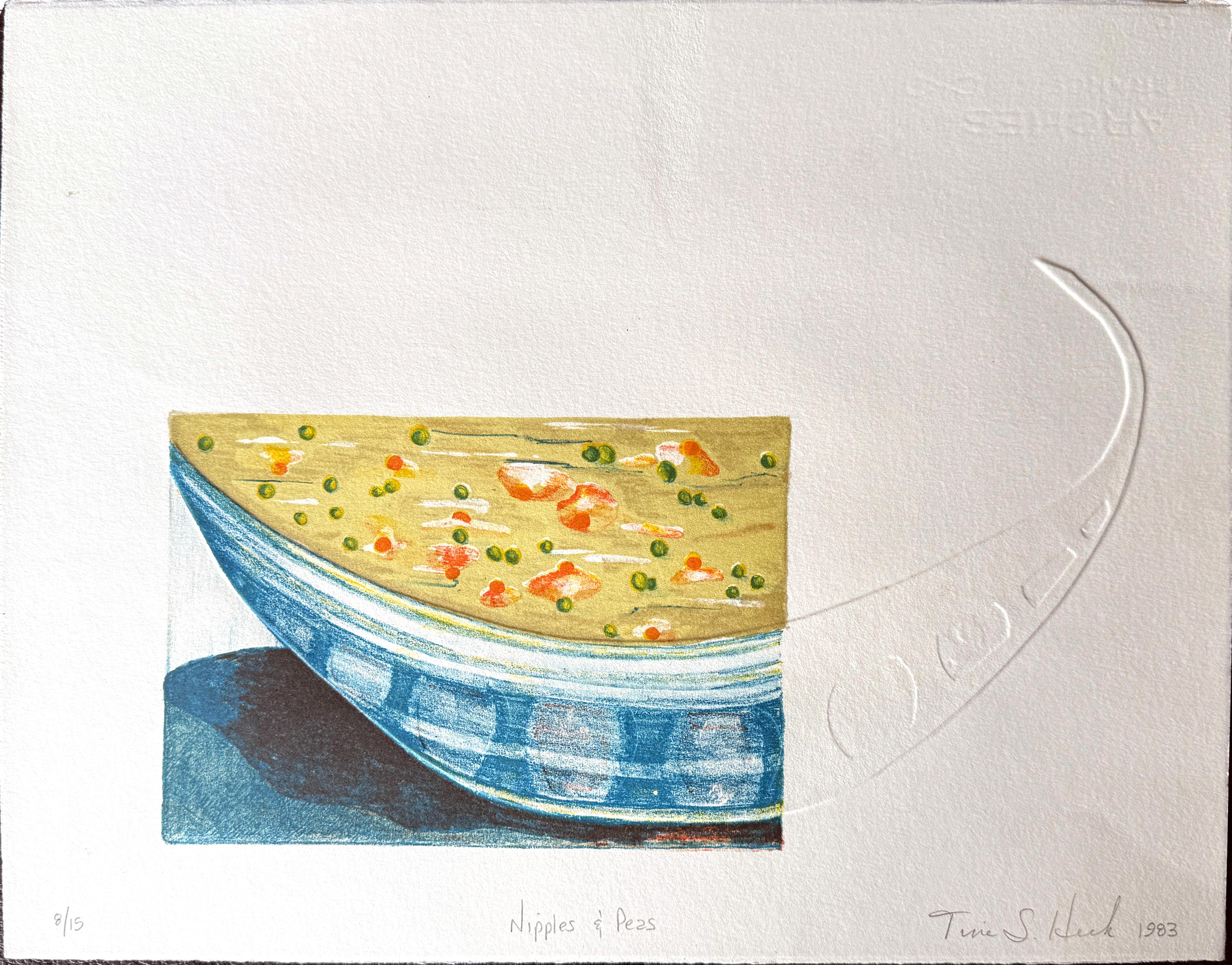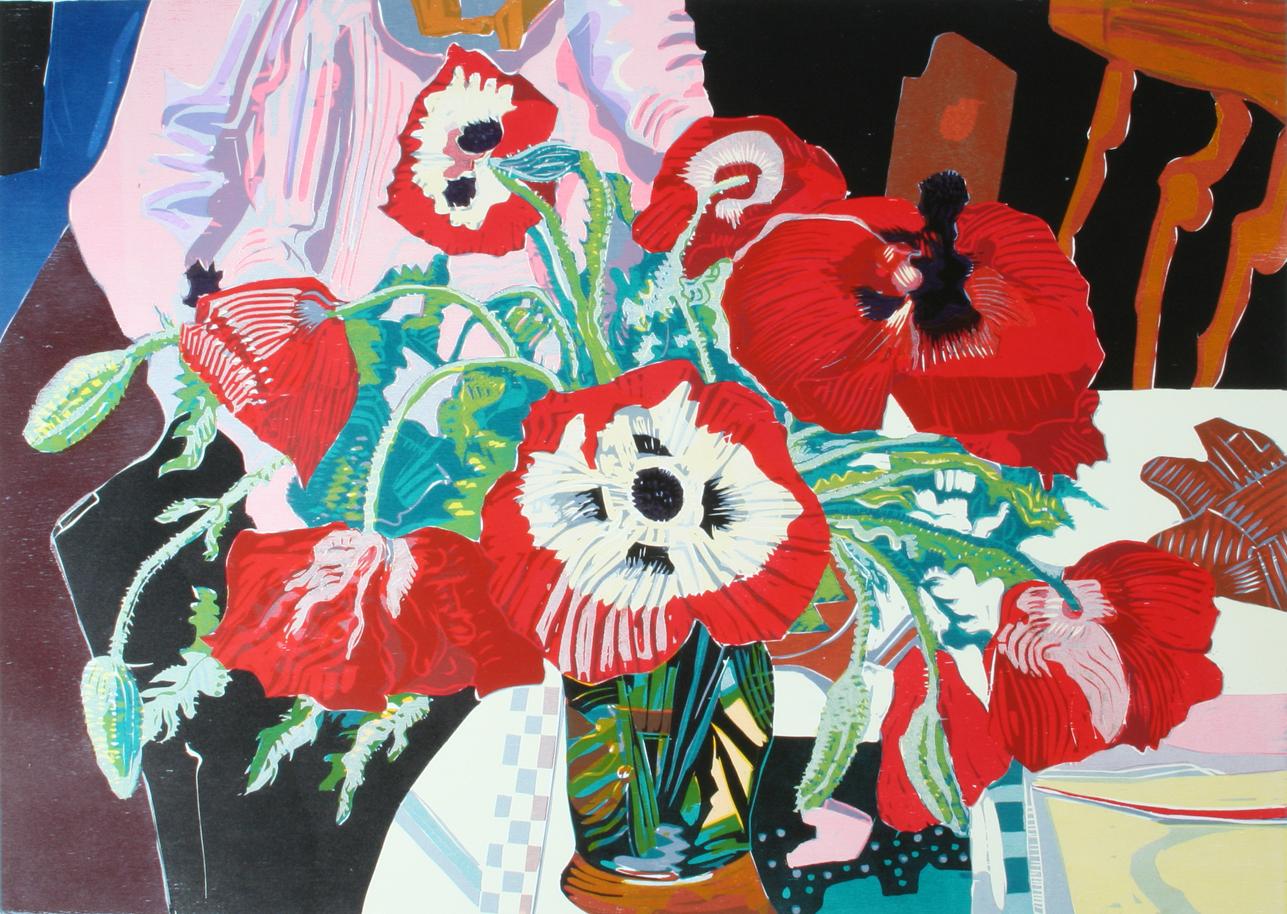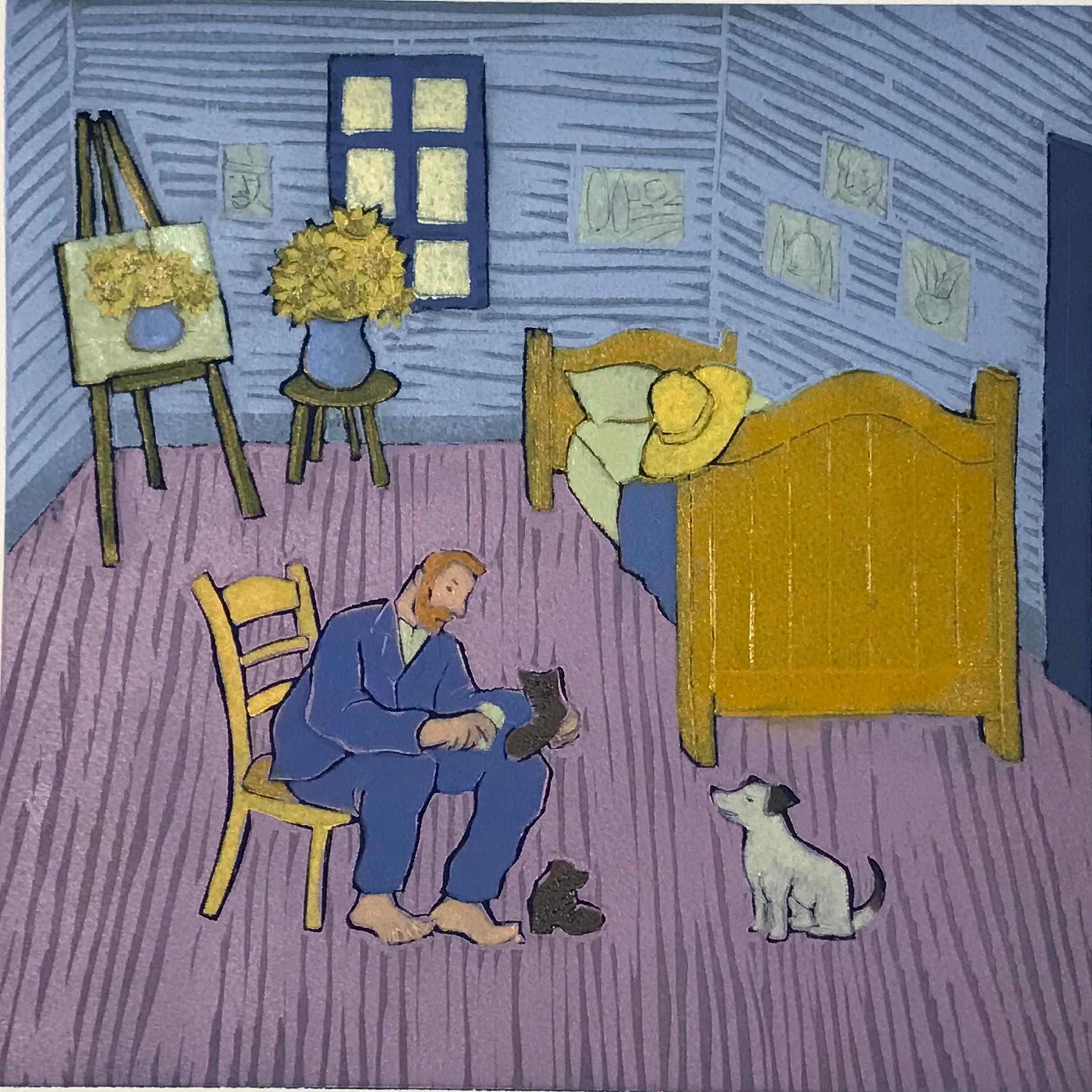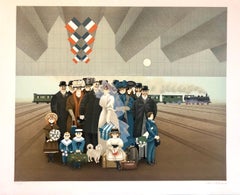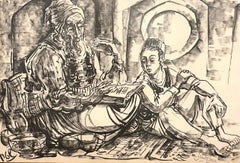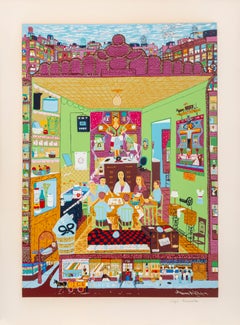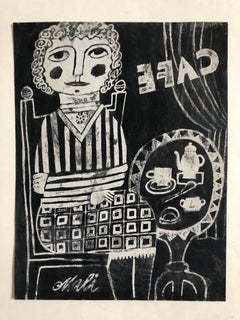
German Outsider Folk Art Naive CAFE Woodcut Woodblock Print
View Similar Items
Want more images or videos?
Request additional images or videos from the seller
1 of 9
Hajo MalekGerman Outsider Folk Art Naive CAFE Woodcut Woodblock Print
Price:$200
$400List Price
About the Item
- Creator:Hajo Malek (1922 - 2000, German)
- Dimensions:Height: 27.5 in (69.85 cm)Width: 13.75 in (34.93 cm)
- Medium:
- Movement & Style:Outsider Art
- Period:
- Condition:minor wear, mount has some wear 17.75x13.75 mount size, 10x7.75 image size.
- Gallery Location:Surfside, FL
- Reference Number:1stDibs: LU3823542492
About the Seller
4.9
Platinum Seller
Premium sellers with a 4.7+ rating and 24-hour response times
Established in 1995
1stDibs seller since 2014
1,780 sales on 1stDibs
Authenticity Guarantee
In the unlikely event there’s an issue with an item’s authenticity, contact us within 1 year for a full refund. DetailsMoney-Back Guarantee
If your item is not as described, is damaged in transit, or does not arrive, contact us within 7 days for a full refund. Details24-Hour Cancellation
You have a 24-hour grace period in which to reconsider your purchase, with no questions asked.Vetted Professional Sellers
Our world-class sellers must adhere to strict standards for service and quality, maintaining the integrity of our listings.Price-Match Guarantee
If you find that a seller listed the same item for a lower price elsewhere, we’ll match it.Trusted Global Delivery
Our best-in-class carrier network provides specialized shipping options worldwide, including custom delivery.More From This Seller
View AllNaive Lithograph Paris Train Station Wedding Party, Honeymoon Scene Folk Art
Located in Surfside, FL
Hand signed, limited edition on BFK Rives French art paper. I believe the title is Honeymoon.
Jan Balet (20 July 1913 in Bremen – 31 January 2009 in Estavayer le Lac, Switzerland), w...
Category
20th Century Folk Art Figurative Prints
Materials
Lithograph
Israeli Jerusalem Judaica Sephardic Rabbi, Boy, Torah Art Drawing Bezalel School
By Jossi Stern
Located in Surfside, FL
Vibrant lithograph by Israeli master JOSSI STERN. on paper mounted to board. Sefardic Rabbi studying with son Torah.
23 x 21 framed 13.5 x 19.5
Hungary, b. 1923, d. 1992
Jossi (Yossi) Stern, son of David and Katerina, was born in the Bakon Hills of Hungary, in 1923. He was already drawing when at the age of ten he moved with his family from the Bakon Hill region to the considerably more cosmopolitan Budapest.
Recognizing the looming threat of Hitler and the pending Nazi invasion of Hungary, in 1940, at the age of seventeen, the young artist made his way to Palestine aboard the Sakaria, an old ship heavily crowded with 2,300 other refugees. Before reaching the shores of Palestine, then under the British Mandate, the British Navy intercepted the ship and declared Stern and all those aboard illegal immigrants. Stern was sent to a prison camp where he remained incarcerated by the British for six months.
In 1943, having spent a few years doing agricultural work, Stern was encouraged by close friends who recognized his artistic talent to enroll in the prestigious Bezalel School of the Arts in Jerusalem. An outstanding student, he eventually became a highly respected teacher of Graphic Arts at Bezalel.
Stern is recognized in Israel as having been one of the country's premier artists. His drawings are exhibited and appear in many publications and museums worldwide. Stern was the recipient of numerous awards including the Jerusalem Medal as well as both the UNESCO and Herzl Prize.
He was included in the exhibition New Bezalel Artists' House, Jerusalem Tel Aviv Museum, along with Artists:
Ludwig Wolpert, Joseph Budko, Gershon Knispel, Gershon Avigdor Arikha, Maryan, Jacob Steinhardt, Ruth Schloss...
Category
20th Century Modern Figurative Prints
Materials
Lithograph
Chinese Israeli Modernist Still Life Lithograph Abstract Flowers in Vase
By Efraim Fima
Located in Surfside, FL
On Arches French art paper.
Fima (born Efraim Roeytenberg) (1914 – 2005) was an Israeli artist born in China. He spent most of his career in France.
Ephraim (Yafim) Roeytenberg, know...
Category
20th Century Abstract Expressionist Interior Prints
Materials
Lithograph
Chinese Israeli Modernist Still Life Lithograph Abstract Flowers in Vase
By Efraim Fima
Located in Surfside, FL
Fima (born Efraim Roeytenberg) (1914 – 2005) was an Israeli artist born in China. He spent most of his career in France.
Ephraim (Yafim) Roeytenberg, known as "Fima" or "Pima", was b...
Category
Mid-20th Century Abstract Expressionist Interior Prints
Materials
Lithograph
Israeli Expressionist Yosl Bergner Modernist Lithograph Kibbutz Coffee Grinder
By Yosl Bergner
Located in Surfside, FL
Abstract Composition, Coffee Grinder
Hand signed in Hebrew Lower right. limited edition. Dimensions: H 18.5" x 24.9"
Bergner, Yosl (Vladimir Jossif) (b Vienna, 13 Oct 1920). surr...
Category
Mid-20th Century Modern Figurative Prints
Materials
Lithograph, Screen
Jewish Shtetl Shabbat Candles Russian Judaica Etching w Hand Watercolor Painting
By Eugene Abeshaus
Located in Surfside, FL
EUGENE ABESHAUS Leningrad, Russia, (1939-2008)
Hand-Colored, with watercolor painting, Etching hand signed in pencil in English and Hebrew
Numbered 47/110
Framed 21.5 x 16. image 13.5 x 9
Eugene Abeshaus (also spelled Evgeny Abezgauz, Евгений Абезгауз in Russian; 1939–2008) was a Jewish artist who worked in Russia (then USSR) and Israel.
Born in Leningrad to a typical intelligentsia family, Abeshaus was educated as an electrical engineer but soon abandoned this career and enrolled in the Mukhina School for Applied Art. By the time of his graduation from the famous “Mukha” (Fly in Russian), he had already developed a critical stance towards the official Soviet art dominated by the Communist ideology and began exhibiting at semi-underground exhibitions. This was culminated by his taking part in a famous 1975 exhibition at the Nevsky Palace of Culture. Abeshaus was fired from his job and censured by the official press – which however admitted his "artistic taste, a good sense of color and form".
Soon afterwards, Abeshaus set up, together with several Jewish artists, the Alef Group and became its leader. The group’s first exhibition in November 1975 was held at Abeshauses’ small apartment. According to the Alef Manifesto written by Alek Rapoport, “We are trying to conquer the influence of small-town Jewish art and find sources for our work in deeper, wiser, and more spiritual European culture, and from it build a bridge to today and tomorrow". He was part of a generation of Russian, mostly Jewish artist's that included Oskar Rabin, Evgeny Rukhin...
Category
20th Century Modern Figurative Prints
Materials
Watercolor, Etching, Paper
You May Also Like
Family Supper, Colorful Folk Art Screenprint by Ralph Fasanella
By Ralph Fasanella
Located in Long Island City, NY
Artist: Ralph Fasanella, American (1914 - 1997)
Title: Family Supper
Year: 1974
Medium: Screenprint on Arches Paper, signed in pencil
Edition: 250, AP 25
Size: 41 in. x 31 in. (104.1...
Category
1970s Folk Art Figurative Prints
Materials
Screen
Rubber Plant III, house plant print, affordable art, limited edition art
By Kerry Day
Located in Deddington, GB
'Rubber Plant III' is a multi layered reduction Lino Print in a varied edition of 10. Based on Kerry's love of her house plants, she wanted to depict the subtle pattern in the rubber...
Category
2010s Pop Art Interior Prints
Materials
Paper, Linocut
Elizabeth Peyton, The Kiss - Etching, Contemporary Art, Signed Print
By Elizabeth Peyton
Located in Hamburg, DE
Elizabeth Peyton (American, b. 1965)
The Kiss, 2018
Medium: Etching on wove paper
Dimensions: 33 x 37 cm
Edition of 30: Hand-signed and numbered
Condition: Mint
Category
21st Century and Contemporary Contemporary Figurative Prints
Materials
Linocut
"Winch" British Linocut Grosvenor School Machine Age 1930 Woman Artist Print
By Sybil Andrews
Located in New York, NY
"Winch" British Linocut Grosvenor School Machine Age 1930 Woman Artist Print
"The Winch" 1930. 7 3/4 x 11 (sight) inches. Linocut in colors on tissue...
Category
1930s Modern Figurative Prints
Materials
Linocut
La Messe (The Mass), after Caravaggio
Located in Middletown, NY
Chiaroscuro woodcut with underlying engraving on cream laid paper, printed from two blocks in brown and olive. 10 1/4 x 12 3/4 inches (260 x 321 mm) (plate), full margins with the text printing clearly below in black ink. In very good condition with scattered surface soiling and several minor flecks of light discoloration in the margins, especially in the area of the lower right corner, well outside of image area. Unobtrusive notations in pencil in the margin and on the verso. All condition issues are consistent with age. After a drawing of the same title by Polidoro da Caravaggio...
Category
Mid-18th Century Old Masters Figurative Prints
Materials
Laid Paper, Engraving, Woodcut
The Lonely House at Asajigahara.
Located in Middletown, NY
A scene from a series of ghost stories and spooky rural legends.
Tokyo: Matsuki Heikichi, 1896.
Woodcut in ink with embossing and hand-coloring in watercolor on handmade mulberry pa...
Category
Late 19th Century Edo Figurative Prints
Materials
Watercolor, Handmade Paper, Woodcut
